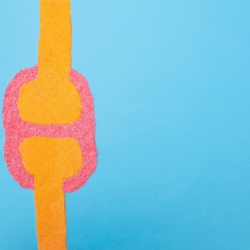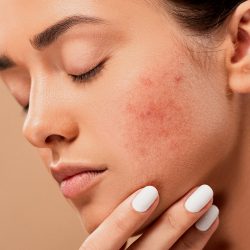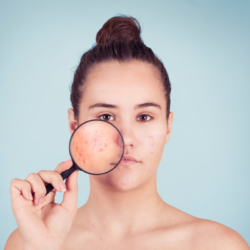Anemia, defined as a significant iron deficiency, is a public health problem affecting more than one and a half billion people worldwide. Children, adolescents, pregnant women and women of child-bearing age are at the forefront of this condition, which also affects the rest of the population. In France, iron deficiency affects 25% of pre-menopausal women, with 5% suffering from proven anaemia. Among men and the elderly, anaemia is less common but no less worrying.
The clinical manifestations are as discreet as they are disturbing: pale complexion, chronic fatigue, intermittent headaches and reduced libido are the early signs. Prolonged anaemia can even lead to dyspnoea – shortness of breath – on exertion and episodes of dizziness.
In this article, the Soin et Nature online pharmacy offers you its expertise in detecting, understanding and tackling anaemia with natural solutions. Our aim is twofold: to provide you with accurate information and to support you in your quest for optimised health, by restoring your iron balance in a natural and caring way.
What is anaemia?
Anaemia is a disease that affects the quantity or quality of red blood cells. It is defined by a drop in the level of haemoglobin contained in the red blood cells. This drop in levels then leads to a reduction in oxygen transport within all the cells of our body.
In fact, there are several types of anaemia. Anemia can result from three main mechanisms:
- Blood loss: Acute or chronic haemorrhage;
- Decreased production of red blood cells;
- Increased destruction of red blood cells (haemolysis).
Iron deficiency anaemia (due to a lack of iron) is nevertheless the most common anaemia
The life of a red blood cell: The fight against anaemia
In the quest for natural treatments for anaemia, it is vital to understand the life cycle of red blood cells, the essential components of the blood responsible for transporting oxygen. Understanding their synthesis and renewal sheds light on the processes that natural remedies seek to support.
Erythropoietin: The production signal
The start of a red blood cell’s life is signalled by erythropoietin, a key hormone produced by the kidneys. It controls the production of red blood cells in response to low oxygen levels in the blood, a situation common in people with anaemia. Kidney health is therefore intrinsically linked to the prevention and natural treatment of anaemia.
Marrow and marrow : The manufacturing workshops
The bone marrow plays the role of a factory, manufacturing red blood cells among other blood cells. Supporting bone marrow function with adequate nutrients, such as iron, vitamin B12 and folic acid, can be a natural strategy for combating anaemia.
Oxygen transport: A crucial mission
Once created, red blood cells begin their vital mission of delivering oxygen to all cells and eliminating carbon dioxide, a function that can be weakened in individuals with anaemia. Improving blood quality with foods rich in iron and antioxidant compounds is a natural way of strengthening this function.
Degradation and renewal: a necessary balance
Towards the end of their 120-day life cycle, red blood cells are broken down by the spleen. Constant renewal is necessary to maintain an adequate number of red blood cells, and essential nutrients play a role in this renewal. Maintaining optimal nutritional intake is therefore crucial to the prevention and treatment of anaemia.
In short, every stage in the life of a red blood cell is a potential target for natural interventions against anaemia. A balanced diet, natural supplements and a healthy lifestyle are the mainstays for helping the body to maintain an optimal level of red blood cells and combat anaemia naturally.
What are the different types of anaemia?
Anemia does not manifest itself uniformly in all individuals. This condition, characterised by haemoglobin levels below established norms, comes in several distinct forms. Each is distinguished by specific criteria such as mean corpuscular volume (MCV), mean corpuscular haemoglobin concentration (MCHC ), and the level of reticulocytes, which are young red blood cells in the blood. Understanding these criteria enables healthcare professionals to pinpoint the nature of the anaemia in order to propose appropriate treatment. There are four main categories of anaemia, each with its own causes and implications:
Aregenerative Hypochromic Microcytic Anemia
These anaemias are characterised by red blood cells that are smaller than normal and less colourful due to a haemoglobin deficiency. The most common anaemia in this category is iron deficiency anaemia, caused by a lack of iron. This deficiency can occur as a result of insufficient iron intake or excessive losses, as is often the case with heavy menstruation or digestive haemorrhage.
Aregenerative Normochromic Macrocytic Anemia
This type of anaemia involves larger red blood cells, often linked to a deficiency of vitamin B12 or, more rarely, vitamin B9 (folic acid). It is commonly referred to as macrocytic anaemia or megalocytic anaemia, depending on GMV values.
Regenerative Normochromic Anemia
Here, the red blood cells are of normal size and colour, but they are destroyed more rapidly than normal, which may be the result of pathologies such as sickle cell anaemia, infections or reactions to certain treatments. This type of anaemia is known as haemolytic anaemia.
Aregenerative Normochromic Anemia
Less common, these anaemias are due to dysfunction of the bone marrow, where red blood cells are synthesised. They can be caused by direct pathologies of the bone marrow, but also by genetic anomalies affecting haemoglobin production, such as thalassaemia.
In addition, regenerative normocytic or macrocytic anaemias may be encountered, caused by haemorrhage, hyperhaemolysis (excessive destruction of red blood cells) or hereditary diseases such as spherocytosis.
Finally, arregenerative deficiency macrocytic anaemias are typically due to folic acid or vitamin B12 deficiencies, Biermer’s anaemia being a classic example.
Each of these types of anaemia requires a distinct diagnostic and therapeutic approach, hence the importance of accurate identification for optimal treatment.
What are the clinical signs of anaemia?
Anemia is a condition that can remain silent or manifest itself through a variety of clinical signs, affecting the quality of life of sufferers. Identifying these symptoms early on is crucial to effective management and preventing complications. But what are the distinctive clinical signs of anaemia? This part of the article will look in detail at the indicators to look out for when detecting anaemia. We will explore common symptoms and their implications for your health. Understanding these signals is an essential step towards early diagnosis and the appropriate treatment that may be required to restore haemoglobin levels and improve oxygen transport in the body.
Signs common to all anaemias
All anaemias are manifested by:
- asthenia, weakness, exaggerated tiredness
- tachycardia, palpitations
- dyspnoea on exertion, polypnoea
- pale skin and mucous membranes
- fever
- heart murmur
- headaches
- dizziness or ringing in the ears
Specific signs depending on the cause
- Anemia due to iron deficiency: fragile skin (soft, brittle, concave nails, dry, brittle hair). In a more advanced form, dry skin, cracks at the corners of the mouth, signs of atrophy of the digestive mucosa. Tendency to infections, discrete splenomegaly, eating disorder (pica).
- Inflammatory anaemia: Inflammatory syndrome (fever, sweating, deterioration in general condition)
- Vitamin B12 deficiency anaemia: atrophy of the mucous membrane covering the tongue
- Thalassaemia: the intensity of the anaemia varies according to the type of anomaly. Subicterus, delayed height and weight, bone deformities, mongoloid facies, hepatosplenomegaly
- Acute haemorrhagic anaemia: signs of hypovolaemic shock, visible haemorrhage, presence of blood in the stools, etc.
- Haemolytic anaemia: conjunctival subicterus, dark urine, splenomegaly
- Hereditary spherocytosis: Characteristic triad: anaemia, jaundice, splenomegaly /- biliary lithiasis, delayed growth and development with deformation of the skull bones
Anaemia: people at risk
Women, children and the elderly are particularly at risk
- Menstrual periods, which are more frequent under IUDs, are essentially the most frequent cause of hypochromic iron-deficiency anaemia. Vigilance is also required during pregnancy and puberty (quality of dietary intake).
- You should also be wary of regular bleeding from the nose and gums, particularly after brushing your teeth
- Children living in precarious conditions are at risk of anaemia. By licking old paintwork and old pipes, they can sometimes fall victim to lead poisoning, which attacks the production of red blood cells.
- Among older people, digestive haemorrhage, oesophagitis or simple erosions linked to medication (anti-inflammatory drugs, aspirin, anticoagulants) are the most common causes of anaemia. Their sometimes inadequate dietary intake is responsible for deficiencies in iron, vitamin B12 and B9. Long-term treatment with anti-ulcer drugs can also cause vitamin B12 deficiency.
Risk factors for anaemia
Certain situations expose you to a high risk of anaemia:
- A diet deficient in iron, vitamin B9 (folic acid) or vitamin B12. Vegans are at greater risk of vitamin B12 and iron deficiency because they do not consume animal proteins.
- Alcoholism.
- Consumption of certain medicines. For example, anti-inflammatory drugs, aspirin and anticoagulants can cause internal bleeding. Other drugs can interfere with the absorption or metabolism of folic acid. As this interaction is well known, people who must take this type of medication are also prescribed folic acid supplements as a preventive treatment for anaemia.
- Exposure to certain chemicals, particularly lead
What causes anaemia?
Deciphering the origins of anaemia is essential if treatment is to be tailored to each individual case. In this section, we explore in depth the various causes of anaemia, ranging from nutritional deficiencies to more complex pathologies, in order to identify the best management strategies, including effective natural remedies.
Iron deficiency: Key factors
Iron deficiency is one of the main causes of microcytic anaemia. It can result from a number of different factors:
- Insufficient intake: Especially in infants without iron supplementation, pregnant or breastfeeding women, and elderly people suffering from malnutrition.
- Reduced absorption: This may be due to certain digestive disorders or the use of foods and diets that impair iron absorption.
- Excessive blood loss: Haemorrhage, whether gynaecological, digestive or due to frequent epistaxis, is also a major source of iron deficiency.
Chronic inflammatory conditions and normocytic or macrocytic regenerative anaemia
Chronic inflammation due to various pathologies can lead to normocytic or macrocytic regenerative anaemia:
- Chronic infections: such as tuberculosis or HIV.
- Autoimmune diseases: such as lupus or rheumatoid arthritis.
- Cancers: which can directly affect red blood cell production.
Haemolytic anaemias: A variety of causes
- Constitutional abnormalities of the red blood cell: Hereditary conditions such as spherocytosis or enzyme deficiencies.
- Genetic haemoglobin abnormalities: Sickle cell anaemia and thalassaemia are notable examples.
- Infectious or toxic factors: Certain pathogens or toxins can induce haemolysis.
- Mechanical or immunological damage: Vascular lesions or immune reactions may also be responsible for increased destruction of red blood cells.
Aregenerative anaemias: when production stops
Aregenerative anaemias are often linked to problems affecting the bone marrow itself:
- Kidney or thyroid conditions: Such as renal failure or hypothyroidism.
- Deficiency of key nutrients: A diet deficient in vitamin B12 or folates, often observed in vegans, can lead to this type of anaemia.
- Pathologies of the bone marrow: Diseases directly affecting the marrow, such as leukaemia or myelofibrosis, can prevent adequate production of red blood cells.
For a more detailed analysis of these causes, it is advisable to consult recent statistics provided by health centres and epidemiological studies. For example, [relevant source] reports that X% of anaemia in women of childbearing age is due to iron deficiency, while Y% of anaemia in low- and middle-income countries is caused by inflammation or chronic infection.
By understanding the underlying causes of anaemia, treatments can be better targeted, including natural approaches that can support red blood cell production and iron absorption.
Understanding the risks: Complications of anaemia
When neglected or under-treated, anaemia can have serious consequences for overall health. This section looks at the potential complications of anaemia, highlighting the long-term effects on the heart, nervous system and kidney function. Increased vigilance and proactive management are essential to prevent these significant risks.
The impact of anaemia on heart health
Untreated anaemia is more than just fatigue; it can have severe consequences, particularly in the elderly. One of the most serious complications is the effect on the heart. Oxygen deprivation due to chronic anaemia can cause angina (chest pain) and increase the risk of myocardial infarction (heart attack).
The crucial role of vitamin B12
In the event of vitamin B12 deficiency, the issues go beyond the usual symptoms of anaemia. This vitamin is vital for the nervous system and its absence can trigger profound neurological disorders. Symptoms such as numbness, tingling or even impaired coordination can occur, signalling potentially irreversible nerve damage.
Haemolytic anaemia and renal function
Haemolytic anaemia, characterised by the accelerated destruction of red blood cells, can lead to kidney failure. This critical medical situation requires immediate attention, underlining the importance of prevention and appropriate treatment of anaemia.
To prevent these complications, it is crucial to recognise the signs of anaemia and consult a healthcare professional for proper diagnosis and treatment, including the potential use of natural remedies.
How can anaemia be prevented?
Preventing anaemia is a proactive approach that starts with our diet. A balanced diet, rich in key nutrients such as protein, iron, folic acid and vitamin B12, is crucial in preventing this condition.
Iron: The pillar of haemoglobin
Iron is vital for the formation of haemoglobin, which enables oxygen to be transported throughout the body. A diet rich in haem iron (found in meat and offal) and non-haem iron (found in vegetables, nuts and grains) is recommended. To optimise the absorption of iron, particularly non-haem iron from plant sources, it is beneficial to eat foods rich in vitamin C, such as citrus fruits and berries.
Vitamin B12 and Folates: Essential for blood cells
Foods rich in vitamin B12 and folates support healthy blood cells and prevent megaloblastic anaemia. Including sources of B12 such as animal products and folates from green leafy vegetables in the diet can play a decisive role in preventing anaemia.
Avoiding iron deficiency
Pregnant women, the elderly, vegetarians and individuals with particular medical conditions may be at risk of iron deficiency. Dietary supplements may be necessary, particularly for those who are unlikely to obtain sufficient iron from their diet alone, such as pregnant women or people following a strict vegetarian diet.
Be careful with toxic substances
Preventing anaemia also includes minimising exposure to chemicals that could harm blood cell production. Safety measures must be applied when handling potentially dangerous substances.
Breastfeeding support
Breastfeeding is a crucial step that can positively influence the mother’s iron levels after childbirth, helping to prevent post-partum anaemia.
Advice in the event of anaemia
- But be careful with your heart. With anaemia, even light exercise can cause fatigue. This is because the heart has to work much harder as a result of the impaired oxygen transport associated with anaemia. Avoid unnecessary effort!
- Beware of impacts, cuts and injuries. In the case of anaemia, blood loss should be avoided as far as possible. For example, shave with an electric razor rather than a blade, use toothbrushes with soft bristles and avoid contact sports.
- Prevent any risk of infection. If you have bone marrow anaemia, which also affects your white blood cells, you are more vulnerable to infection. Wash your hands often with antiseptic soap, avoid contact with sick people, get enough sleep, get vaccinated and undergo antibiotic therapy if necessary.
- Drink plenty of fluids. Poor hydration increases blood viscosity and can lead to painful attacks or complications, especially in the case of sickle-cell anaemia.
Strategies for preventing drug-induced anaemia
Iatrogenic anaemias sometimes result from the necessary use of certain drug treatments. Identifying the drugs involved and adapting the treatment are essential to prevent this complication. Here is a targeted approach to managing and preventing these anaemias:
- Assessment and adjustment of treatment: Where possible, the drugs responsible should be reassessed and, if the clinical condition allows, replaced or discontinued.
- Use of supplements: If drug therapy cannot be modified, the introduction of supplements such as folinic acid or calcium folinate may help prevent anaemia.
- List of medicines involved: Medicines such as dihydrofolate reductase inhibitors and certain anti-epileptic drugs are known to increase the risk of megaloblastic anaemia. Increased monitoring is recommended for patients on these treatments.
- Management of heavy periods: In women prone to heavy periods, the use of appropriate hormonal treatments, such as the contraceptive pill or progestin-releasing intrauterine devices, may reduce the risk of anaemia.
- Prevention of anaemia in oncology: Anaemia may occur following repeated cycles of chemotherapy, particularly those involving platinum salts. In the event of a significant fall in haemoglobin, the use of recombinant erythropoietins may be considered to prevent anaemia. This procedure is preferable to the transfusion of red blood cells, except in the case of haemoglobin below 8 g/l, when a transfusion may be necessary.
In conclusion, a proactive approach to monitoring and adjusting medication can help to significantly reduce the incidence of drug-induced anaemia. Close cooperation between patients and healthcare professionals is crucial for effective prevention of these potentially avoidable anaemias.
Maximising the effectiveness of your iron treatment
Starting an iron treatment involves following precise guidelines to ensure the effectiveness of supplementation. Below, discover some practical and essential advice.
At what time of day should you take iron?
Doctors recommend taking iron supplements ideally on an empty stomach, or 30 minutes before a meal to optimise absorption. To reduce side effects, spreading doses throughout the day can be beneficial.
Diet and iron absorption
Certain foods can interfere with the absorption of iron:
- Iron Absorption Inhibitors :
- Phytates: Found in foods such as rhubarb and wholemeal breads, they can bind to iron and interfere with its absorption.
- Phosphates: Found in dairy products, they can reduce iron absorption by 30-50%.
- Tannins: Tea contains tannins, so experts recommend limiting consumption to 2-3 cups a day.
How can iron absorption be boosted?
Taking vitamin C is an excellent way of increasing iron absorption. Taking your supplement with a glass of fresh orange or grapefruit juice can be very beneficial.
Drug interactions
It is crucial to take into account drug interactions:
- Avoid taking iron at the same time as cyclins, fluoroquinolones, penicillamine, antacids, thyroxine and biphosphonates. A separation of at least 3 hours between these medicines and iron is recommended.
Duration of iron treatment
Although improvement in fatigue may be noticeable within 1 to 2 months, iron supplementation should be continued for 5 to 6 months to replenish the body’s reserves. The effectiveness of the treatment should be assessed after 3 months via a blood test.
Management of iron intolerance
If you experience side-effects such as nausea, diarrhoea or constipation, trying to split your iron doses during the day can help to minimise these inconveniences.
Anemia in food supplements
Above all, don’t try to treat yourself with iron supplements or multivitamins containing iron. This could mask a much more serious illness and delay diagnosis.
-
Recommended vitamins and trace elements
Inovance Ferrum® is a dietary supplement containing iron and vitamin C.
- Iron contributes to the normal formation of red blood cells and haemoglobin and to the normal transport of oxygen in the body.
- Iron helps combat fatigue.
- Vitamin C enhances the absorption of iron. Only to be taken if your doctor has prescribed iron treatment. Prefer the natural vitamin C that is Vitascorbol Acerola 1000 Natural vitamin C and acerola: 3 oaks Acerola 500, Acerola 1000 Arkopharma®, Acerol C vitamin C, Acerola Bio 500, Acerola Plus 500, Vitascorbol® 500 or Vitascorbol® 1g.
Treating anaemia with homeopathy
Above all, do not try to treat yourself with homeopathy without consulting your doctor.
Homeopathy is an additional aid, often helping to improve tolerance of iron treatment (which is often poorly tolerated), but can never replace conventional treatments!
In the case of frigidity or mild anaemia: Graphites 9CH
- Blood loss, anaemia and general repercussions (fatigue): China rubra, Phosphoricum acidum, Ferrum metallicum 5CH 3 granules 2 times a day
- Zincum metallicum Anaemia sometimes masked by a state of great fatigue.
- Plumbum metallicum anaemia which may be accompanied by weight loss.
- Natrum muriaticum: anaemia, particularly in thin, cold people
- Kalium carbonicum: cold, anaemic people with oedema and arthritis. Iron deficiency anaemia
Anemia and oligotherapy
Do not attempt to treat yourself with oligotherapy without consulting your doctor. Oligotherapy is an additional aid, but can never replace conventional treatments!
Recommended trace elements
Cobalt: Cobalt is an essential trace element. It is present in the structure of cyanocobalamin or vitamin B12, which is involved in erythropoiesis and haemoglobin biosynthesis.
Trace elements to avoid in cases of anaemia
Zinc: in large quantities: An excessive dose of zinc can cause anaemia
Pharmacy advice: When should you consult a doctor?
- In the event of: paleness, lack of enthusiasm or energy, headaches, loss of libido, inability to concentrate, etc
However, if you suffer from a chronic illness likely to cause anaemia, it’s important to have proper medical monitoring and to have blood tests from time to time. Talk to your doctor.
In the event of shortness of breath on exertion or dizziness







